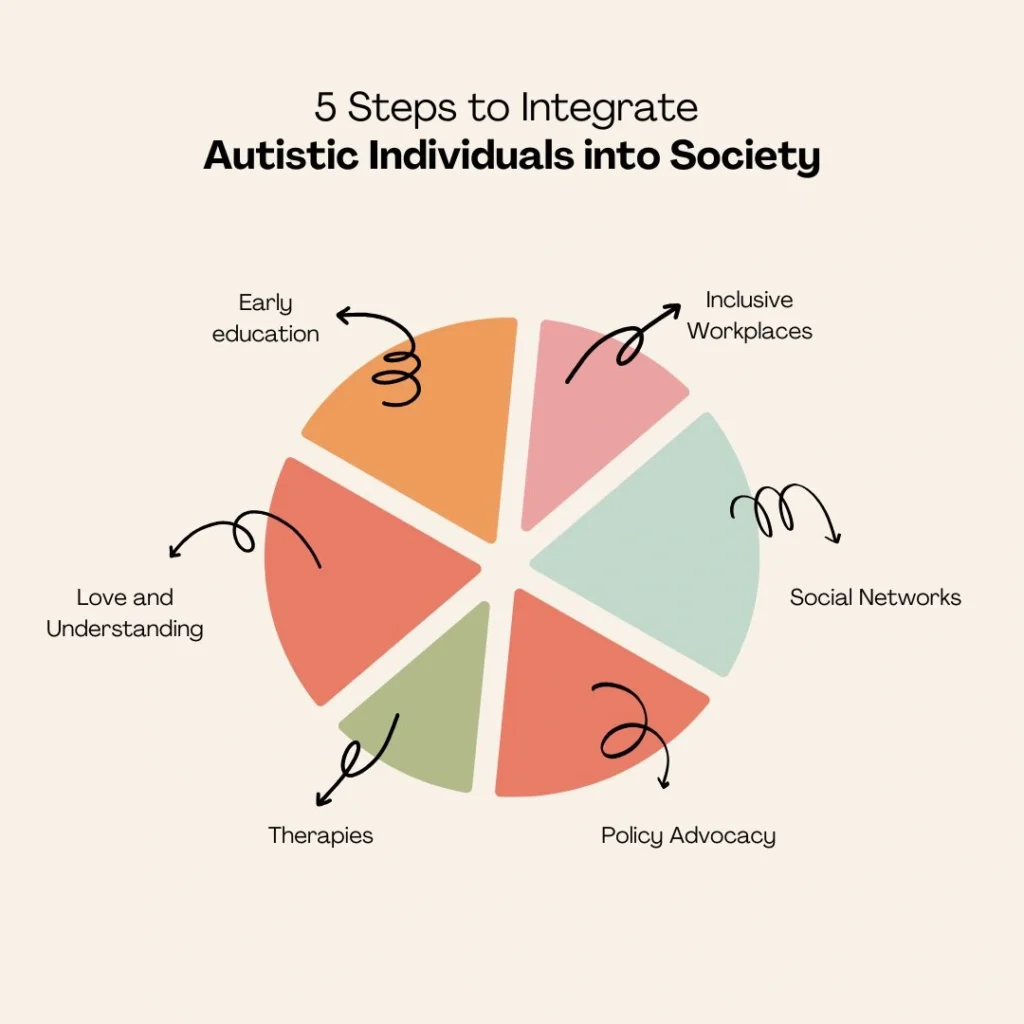Autism is a spectrum condition that affects millions of individuals worldwide, each with unique strengths and challenges. Integrating autistic individuals into society is not just an act of inclusion but a step toward creating a more understanding and diverse community. This article explores practical strategies to support this integration and enhance societal acceptance.
Table of Contents
Introduction
Integrating autistic individuals into society requires collaborative efforts from families, educators, employers, and policymakers. While therapies such as Stem Cell Therapy for Autism Reviews highlight promising results in improving social and cognitive abilities, day-to-day integration strategies remain essential. This article delves into five proven methods to ensure that autistic individuals thrive in society, fostering an inclusive environment that values their unique contributions.
1. Early Intervention and Education
Early intervention is a critical step in helping autistic individuals build the skills they need for integration.
• Enroll children in inclusive educational settings.
• Implement therapies such as Applied Behavior Analysis (ABA) and occupational therapy to enhance communication and social interaction.
• Utilize innovative approaches like assistive technology to tailor learning experiences.
Expert Insight:
Research shows that therapies like Stem Cell Therapy Autism Clinical Trials combined with structured educational programs significantly improve adaptive behaviors.
2. Creating Inclusive Work Environments
Autistic adults often face barriers in employment, but tailored workplace practices can make a significant difference.
• Offer clear job expectations and structured routines.
• Provide sensory-friendly workspaces to reduce overstimulation.
• Conduct workplace training to foster understanding and acceptance among colleagues.
Case Study:
Many companies now actively hire neurodiverse individuals, citing their focus, creativity, and problem-solving skills as invaluable assets. These successes parallel advancements noted in Stem Cell Therapy Autism Success Stories.

3. Building Social Support Networks
Social integration involves creating meaningful connections for autistic individuals.
• Encourage participation in community groups tailored to their interests.
• Facilitate mentorship programs where neurotypical individuals and autistic peers can interact.
• Promote access to support groups for families to share experiences and strategies.
Key Insight:
The Cost of Stem Cell Therapy for Autism may be a consideration, but building a support network costs only time and effort, making it a vital component of integration.
4. Advocating for Policy Changes
Advocacy plays a crucial role in removing systemic barriers for autistic individuals.
• Push for legislation that mandates inclusivity in schools and workplaces.
• Increase funding for research, including Stem Cell Therapy Autism Research.
• Support public awareness campaigns to challenge stereotypes and misconceptions.
Fact:
Countries that implement inclusive policies report higher rates of satisfaction and societal integration among autistic populations.
5. Leveraging Therapies and Medical Advancements
Medical advancements like How Effective is Stem Cell Therapy for Autism provide an additional layer of support for integration efforts.
• Stem cell therapy can complement behavioral and educational interventions, improving overall outcomes.
• Families should stay informed about potential Stem Cell Therapy Autism Side Effects and consult with experts to ensure safety.
• Regular monitoring and adjustments to therapies ensure long-term benefits.
Conclusion
Integrating autistic individuals into society is not a one-size-fits-all process; it requires understanding, patience, and the right resources. From early education to inclusive workplaces and cutting-edge therapies, every effort contributes to a more accepting and empowered community. Families seeking guidance should explore options like Best Stem Cell Clinics for Autism to complement these methods. Together, we can create a world where everyone has the opportunity to thrive.

